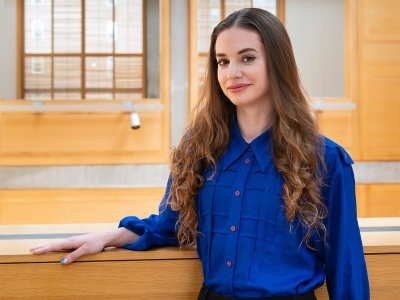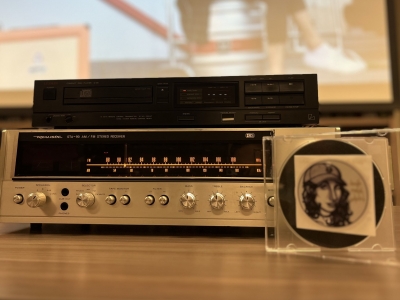By Jena Lynde-Smith
The last few weeks have been fraught with uncertainty but members of Carleton University’s journalism school didn’t let that stop them.
In an effort to abide by the social distancing policies implemented to slow the spread of COVID-19, Carleton announced on Mar. 13 that all classes would be moved online for the remainder of the term. It was a challenge for both students and faculty as they worked together to successful navigate the disruption in teaching and learning.
“Resilience and flexibility are essential qualities for any journalist these days, and we try to ingrain that in our students,” said Susan Harada, the head of the journalism program. “The fact that they were able to pivot so quickly – with great professionalism and heart – clearly demonstrated they’ve learned those lessons well. We’re so proud of what they’ve accomplished.”
Remaining connected
In the senior digital hub workshop, professor Randy Boswell had organized an event at the school with representatives from the African Canadian Association of Ottawa. The intent was to familiarize student reporters with the wide range of issues facing the black community in Ottawa.
It was disappointing when it looked like this planned exercise in “community-engaged journalism” — bringing reporters and members of a local community together to collaboratively identify priorities for news coverage — wasn’t going to happen. But with a lot of good will and enthusiastic participation from students and the ACAO leadership — as well as the technical expertise of the school’s IT coordinator Roger Martin — they had a fruitful, two-hour online session together that Boswell hopes will be reflected in their journalism down the road.

Randy Boswell (top right corner) and four members of ACAO during a lecture that was held on Carleton’s online video conferencing system.
Increasing participation
Instructor Joanna Smith said she was pleasantly surprised by the amount of participation by her students in the online learning environment. Those who may not have participated as much during classroom discussions in a regular setting dived into the activities online. Smith said this has her thinking about ways to incorporate more at-home learning when things return to normal.
“It has been neat to see them engaging with the material in such a deep way, which makes me miss them even more,” she said. “But [I] also feel good about them learning something from this experience.”
Keeping it light
The school’s educators haven’t forgotten about the impact that this pandemic may be having on their students outside of the classroom. They’ve done their best to be supportive while leaving room for some lighthearted moments.
This includes professor Vicky McArthur, who teaches in the Media Production and Design program. McArthur had originally planned to bring sweets to her last class, which ended up being moved online. She tried to brighten her students’ day anyway.
“Since we couldn’t meet, I designed the AR cupcake for students to “enjoy” at home (or wherever they were connecting from) during our final lecture,” she said.
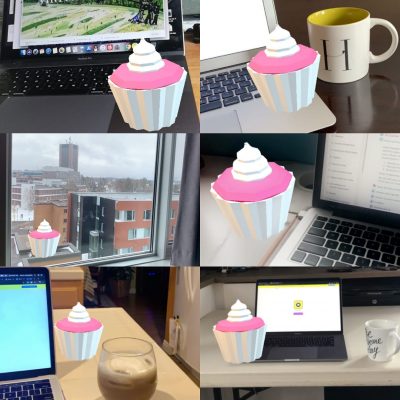
Students sent McArthur photos showing them “enjoying” their cupcake during class.
Keeping it airy
Also welcoming humour and light-heartedness into the classroom was professor Janice Tibbetts.
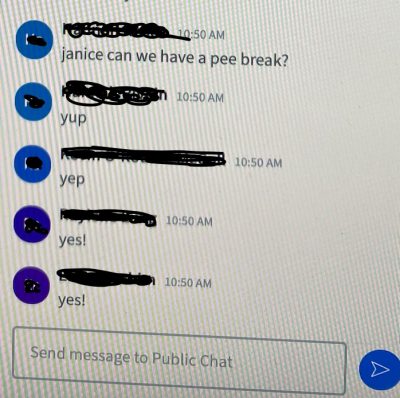
A student sparked a laugh by asking for a washroom break during Janice Tibbetts’ online lecture, and within seconds others followed suit.

Master of journalism student Hannah Rivkin shared a photo of Janice Tibbetts showing off her cat during an online lesson.
Covering COVID
Moving physical classrooms online wasn’t the only way social distancing changed the learning sphere, especially for journalism. Students who were once running around the city conducting in-person interviews had to find ways around that – whether it was through phone calls, emails or video chats – but it didn’t slow them down.
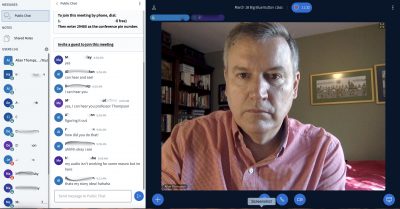
Allan Thompson and his class participate in an online lecture.
Students in Allan Thompson’s third-year digital reporting class held one online video meeting then focused the rest of their term on reporting about the COVID-19 crisis from their home communities. The students contributed some remarkable stories about the impact of COVID-19 to the school’s flagship publication, Capital Current.
Thompson gave the students special instructions to complete their reporting assignments without violating physical distancing guidelines. The irony is that those instructions run counter to one of his – and journalism’s – cardinal rules: the best stories are based on face-to-face interviews. But these are unusual times.
Being innovative
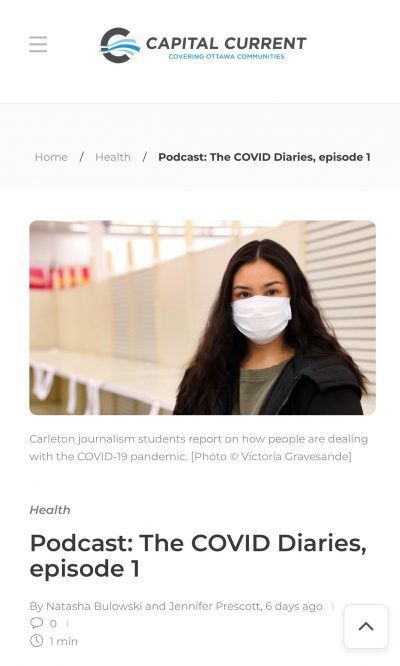
The first episode of the COVID Diaries is available on Capital Current.
Many adjustments had to be made to instructor Amanda Pfeffer’s third-year audio journalism course, but in the end the changes allowed her students to shine.
Normally they would work in teams in the radio newsroom to produce “live to tape” newscasts with packaged reports for the last classes of the term. But even though they could no longer meet in person, the students came up with an innovative way to still work together.
According to Pfeffer, they designed a podcast series: the COVID Diaries and the Corona Chronicles. They researched, wrote and remotely produced weekly reports from the home front – interviewing friends and family about life under COVID restrictions, and packaging reports on the impact in their communities using Skype interviews and audio “tours” of empty residences and grocery stores.
“They landed the plane each week – on time. Like real reporters,” Pfeffer said.
“The takeaway for me, other than the fact that I have the most fantastic class of students ever, is that this generation knew more about designing an online alternative than I did. Getting out of
their way — giving them the power to design this themselves — was the smartest thing I’ve ever done as an educator.”
Getting creative
Things were a little trickier when it came to courses involving video, which by its very nature calls for the conceptualization and shooting of interesting visual scenes. So students in Christine Crowther’s two workshops had some adapting to do.
Crowther said she was fortunate to work with the school’s media producer Dave Elliott as they figured out how to best support students who were working from home using a range of technologies.
“I’m very pleased to say both groups of students have risen to the challenges presented by the last-minute changes,” Crowther said. “They have used various video-calling applications, plugged into material that is being shared on social media, and even asked roommates and family members isolated at home with their interviewees to shoot and send visual sequences.”
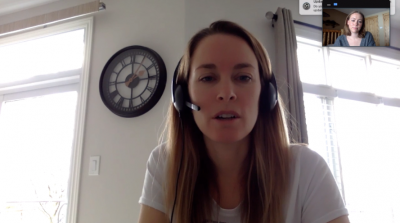
Master of journalism student Raylene Lung (upper right corner) interviewing Kim Loenhart, Educational Technology Development Coordinator for Carleton University’s Educational Development Centre. Lung was back home in Alberta and doing a story about Carleton’s move to online classes.
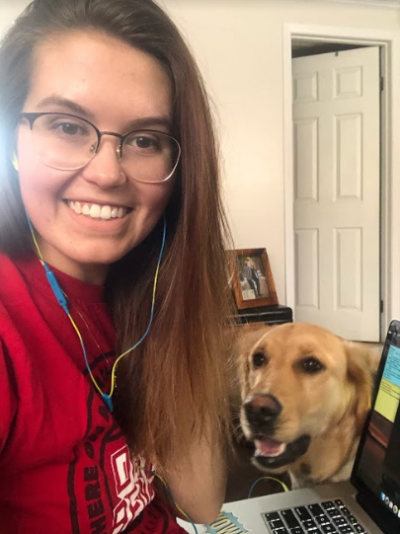
Master of journalism student Samantha Campling and her dog Ember taking a break from editing her story. Campling was back home in Saskatchewan, doing a story about how Carleton University’s therapy dogs were also moving online.
You can see the 25th Hour video stories on Capital Current.
Staying resourceful
In the second-year Fundamentals of Reporting classes with instructor Trish Audette-Longo, students usually finish the year working in the classroom together on “same day” news publications. This year, her students completed their final two issues remotely. They held their morning story meetings using video conferencing, kept in touch all day using Slack, filed stories via Google Drive, and tracked their work with Trello or Google Sheets.
Audette-Longo said they produced ready-to-publish stories about local businesses preparing for life after COVID-19, people sharing with strangers and the prime minister’s daily press briefings. Students also created dynamic TikTok videos and interactive visualizations, and dug into social media to find emerging trends and interesting sources.
“It has been inspiring to see such a variety of stories found, assigned, produced and edited by students, and to see their leadership and professionalism in navigating far different circumstances than any of us would have imagined when the year started,” she said.
Monday, April 6, 2020 in General, Journalism News
Share: Twitter, Facebook
